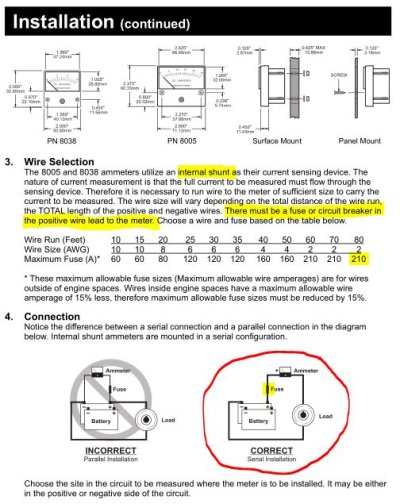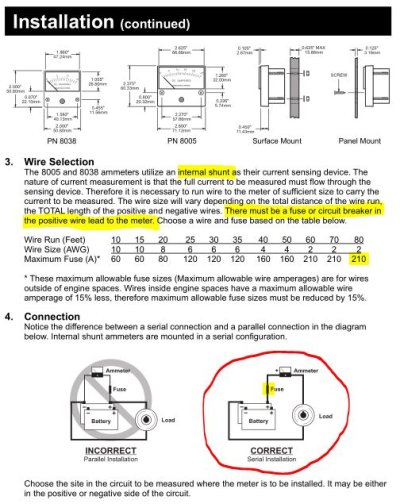Hall-Effect Sensor for DC Ammeter -- no shunt
OK so I have sorted my battery problems out all all are charging well and holding phew.
I would now like to install an amp meter to monitor amp usage at a glance in a 12 volt system what amperage gauge would I need and how should it be installed.
Only concerned with monitoring my house batteries which are 2 x 130amp hour batteries.
Advise appreciated.
Back in the day, the only way to do this was with a shunt, which is a very low-ohm resistor, and an "ammeter" which is really a millivolt meter measuring the voltage drop across the "shunt" (resistor).
The problem with the shunt is that you are now cutting and terminating your main circuit feed to put the shunt inline. If the wiring is larger than 10AWG (and it typically is), these terminations require special crimping tools and connectors. If (for whatever reason) you overload your shunt it will burn up and turn into a "fuse". For this reason, you cannot install a shunt in areas that could contain flammable vapors.
The more modern solution is to measure the magnetic field around the wire, which increases in direct proportion to the current flowing. The problem is that Hall-Effect sensors that can do this used to be very expensive -- but no more.
Here is a DIY version for $20, way less than the shunt based systems that cost >$200 and take half a day to install. Also, it's a digital voltmeter.
https://www.amazon.com/bayite-Digital-Current-Voltage-Transducer/dp/B01DDQM6Z4
Just feed the wire(s) through the ring, connect it to power and you're done.
Other nice features of this approach (aside from price):
- it shows you the amount
and the direction of the current flow (charging vs discharging).
- You can feed multiple wires through the ring, with current flowing either way in each wire, and the meter will display the
sum of the currents. For example, if your charger/alternator is putting out 60A and you are using 50A, this unit will tell you that your charge rate is 10A.
- Works equally well when used on the positive or negative wire.
Enjoy!






